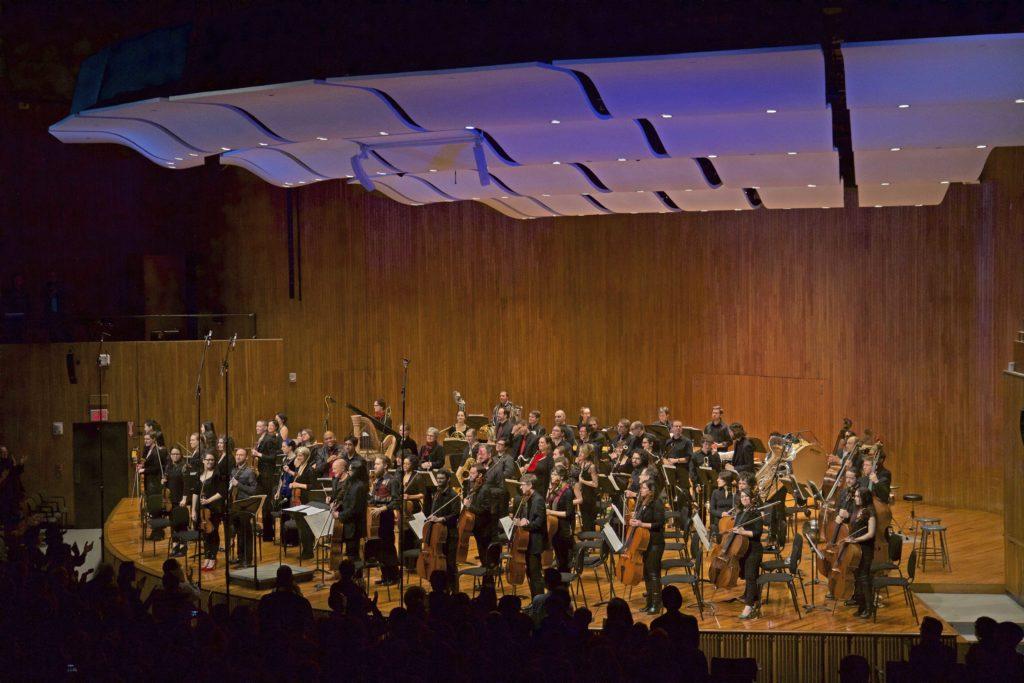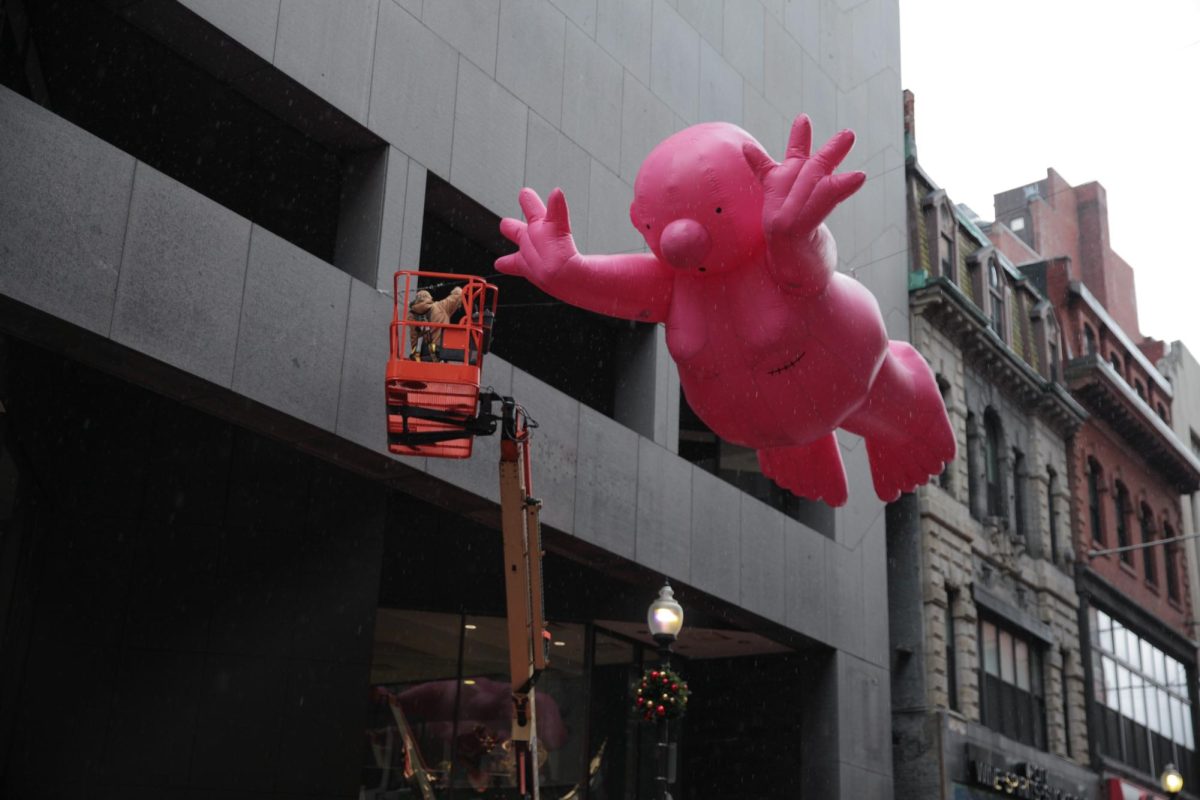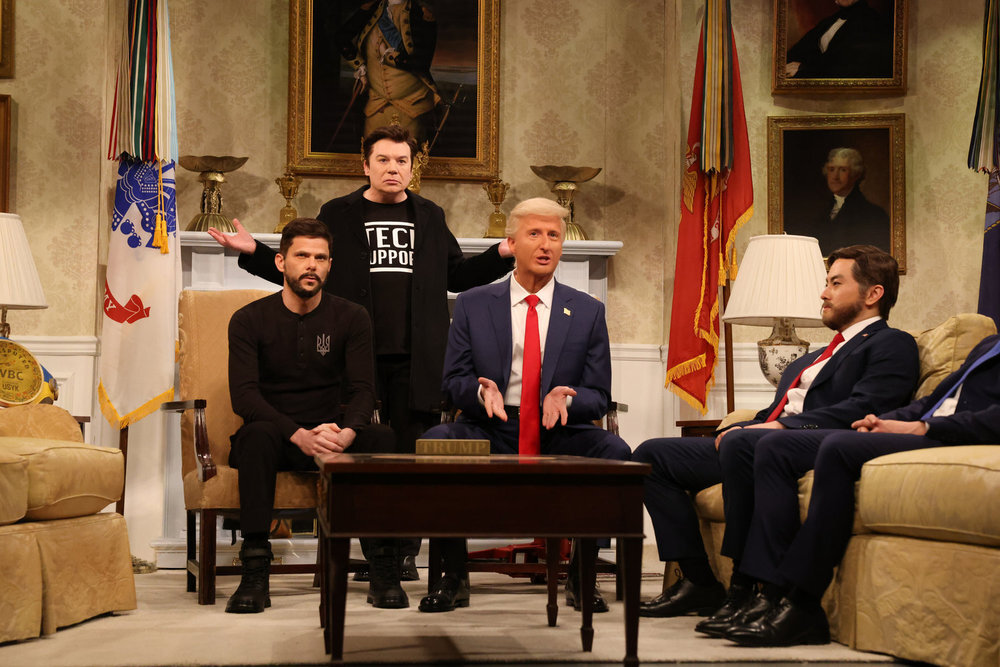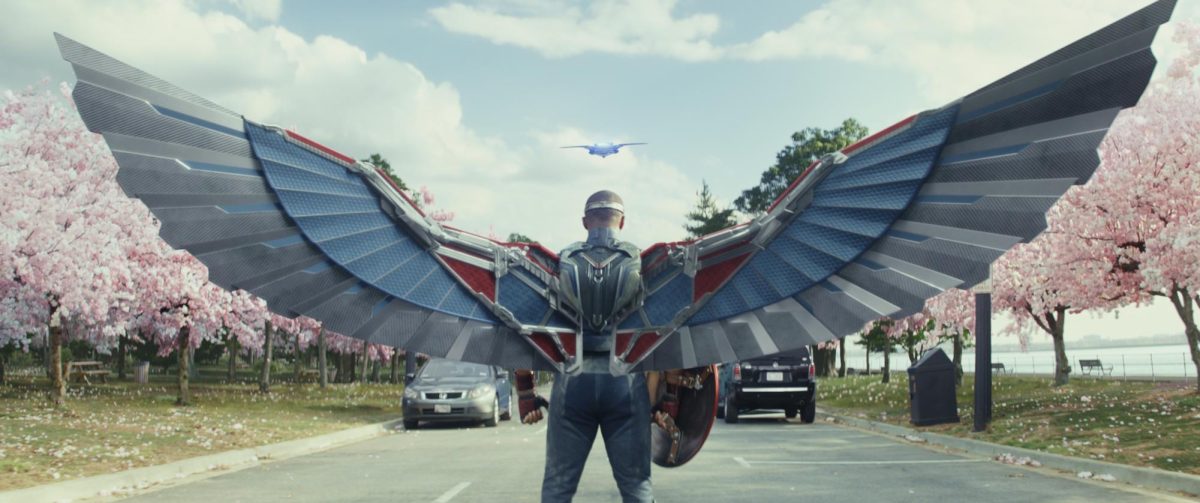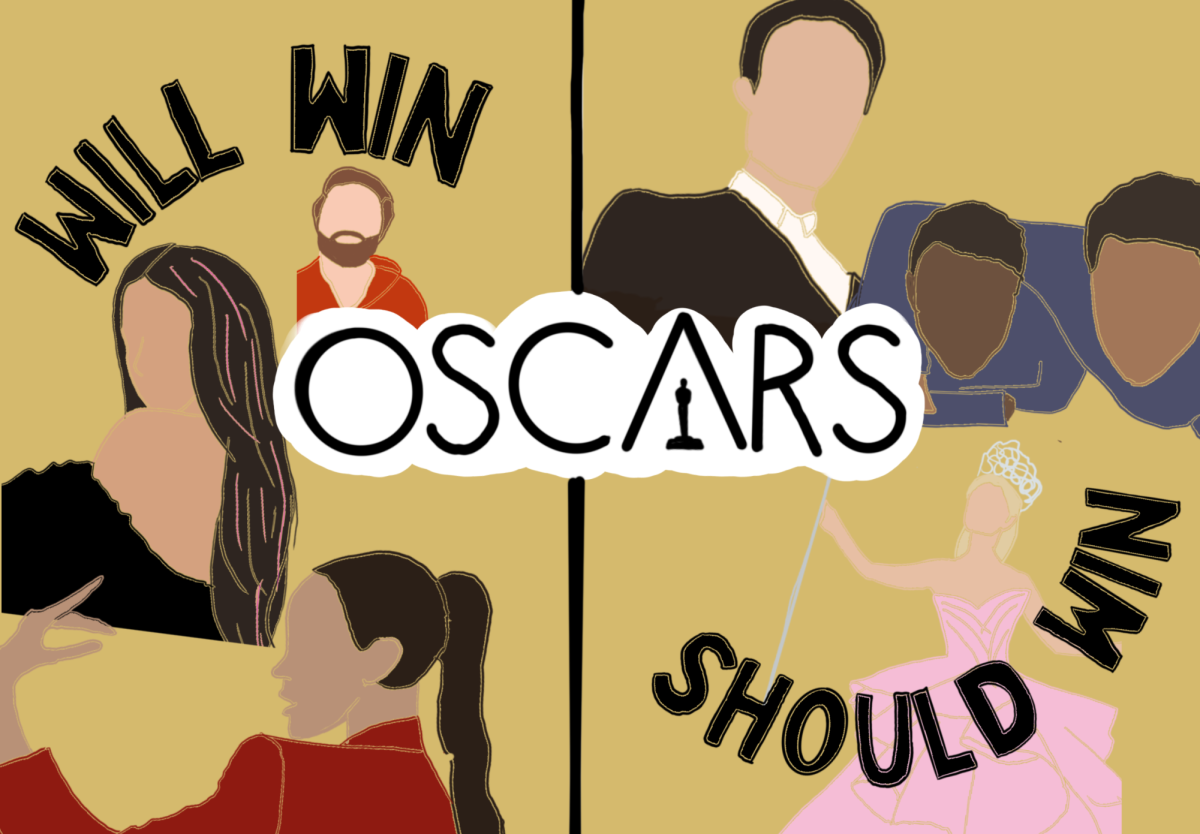By Alejandro Serrano, deputy news editor
A hum from the audience went into a decrescendo as The Ambient Orchestra picked up a pianissimo. Philip Glass’s “Low” began a soft din.
The concert, a tribute to David Bowie, premiered last Friday at Massachusetts Institute of Technology’s (MIT) Kresge Auditorium. An all-volunteer, 80-person orchestra performed Philip Glass’ Symphony No. 1 “Low” and Symphony No. 4 “Heroes.” The event was organized and conducted by composer, musician and MIT professor Evan Ziporyn.
“I was like moping around after Bowie’s death and playing his songs and through phone calls with my friend Richard Guerin, who helped co-produce the show, we found out about the [Glass] pieces,” Ziporyn said. “I started emailing musicians that I have worked with and I had a fairly large group together.”
The performance was a Boston debut, according to Ziporyn. All proceeds went to the Koch Institute Research Fund for cancer at MIT. Bowie died of liver cancer on Jan. 10.
“Doing the show enables us to channel our feelings in a positive way,” Ziporyn said. “It has been very moving to see how the musicians and public reacted to this.”
The orchestra played Symphony No. 1 “Low” first. Glass composed the symphony, which was based on Bowie and Brian Eno’s 1977 record “Low,” in the spring of 1992, according to program notes by Glass.
The first movement of the symphony is based on the album’s last track “Subterraneans,” which features an eerie bass line filling in the absence of a drum beat as well as subtle horn fills over a melodious string arrangement. The second movement in the symphony is based off of piano-oriented “Some Are” and the third movement off of the hollow string and horn blending “Warszawa.”
“I’ve taken themes from three of the instrumentals on the record and, combining them with material of my own, have used them as the basis of three movements of the Symphony,” Glass said in the program notes. “My approach was to treat the themes very much as if they were my own and allow their transformations to follow my own compositional bent when possible.”
The symphonic ballet of Symphony No. 4 is based on a six-movement structure, each influenced by themes from Bowie’s 1977 album “Heroes,” according to Glass’ note.
“Music by Phil Glass is generally difficult to play because it requires a lot of concentration… It’s easy to get lost in the mix of sounds,” orchestra cellist Iva Casian-Lakos said. “It was a great opportunity to play music with people from the city. People care about Glass and people care about Bowie; there was passion and concentration.”
Ziporyn and The Ambient Orchestra received a standing ovation after the sixth movement of the second symphony, “V2 Schneider,” Ziporyn walked off the stage and came back after the applause to introduce the encore of a “more modern” version of Bowie’s 1983 hit “Let’s Dance.”
Crescendoing “Ahs” opened the song along with synchronized bow movement among the violists and violinists.
“The encore was phenomenal. I was mostly singing along to the other charts throughout,” Frank Casados of Roslindale said.
The idea for the concert originated in the days after Bowie’s death, Ziporyn said.
Ambient Orchestra trombonist Randy Pingrey said that decision to play wasn’t difficult.
“I knew Glass’ music and I knew Bowie’s music. The choice was easy – I had to do it,” Pingrey said. “Kudos to Evan for getting people together to do a really good thing…the fact that it was all for a good cause was awesome.”
Minjin Chung, first-year New England Conservatory graduate student, said she attended the performance to support her friends in the orchestra as well as to celebrate Bowie’s life.
“Bowie taught me how to be more brave in my own music. I appreciated how much he experimented,” Chung said.
Photo by Alex Melahrono



